Tuesday
Community ArticlesTouching the Earth Collective: June Newsletter
Bill McKibben on Climate Action and How Faith Communities Are Helping
This is a lightly edited transcript of Bill McKibben speaking on a GreenFaith Eco theology Zoom call, on May 17, 2021, in preparation for the Treaty People Gathering of June 5-8.
First thing to say is that nobody should feel alone for a moment. The climate movement–and especially the faith dimension of it–is so big now and so strong, and so wonderful to watch. Having seen it come from almost nothing 30 years ago… it’s been just a continuing pleasure.
I got on another call this morning with the global Catholic Climate Movement, where people were celebrating huge divestment wins, and there was the Bishop of Limerick in Ireland, the Cardinal from Central Europe, the people from the Vatican and everybody on board in so many places around the world. And we can see this playing out in real-time as people rally around this effort to stop the pipeline in Africa; people get ready to go up to the north country June 5th through 8th to help out there on and on and on….
The context is that we’re in big trouble in terms of what’s happening with the climate and no one needs to be told that but everybody should have the people in Louisiana and parts of Texas in their hearts today. They’re dealing with flooding greater than they’ve ever seen before, not from hurricane, but a huge rainstorm. That’s what we get now in an overheated world … the kind of mega-drought that’s now causing fires in Los Angeles and the kind of rainstorms that are putting Lake Charles, Louisiana, which took a direct hit from two hurricanes last year, underwater today.
All of that’s bad and we all know about it and there’s no need to belabor it.
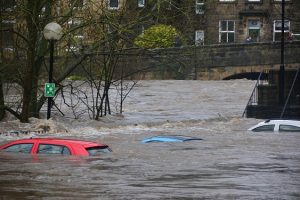
Photo by Chris Gallagher on Unsplash
Although we can talk about the science as much as anyone wants, the politics are a different story and they’re better now than they’ve been in a long time but not good enough. It’s powerful to be in the United States at a moment when our leaders are at least beginning to acknowledge and take seriously the fix that we find ourselves in.
And as you know, the US is trailing, not leading, the rest of the world in that understanding, which is something that became clear yesterday when the International Energy Agency released its new report on what it would take to get the world to 1.5 degrees. I wrote a piece for the New Yorker yesterday, saying that I think this is one of the three or four great moments in the kind of official response to the climate crisis over the last 30 years. Because they say very explicitly that if we’re to meet the targets we said in Paris, then we can no longer, as of this moment, be expanding the size of the fossil fuel empire and… Click here to read the full article.
Thanks to Deborah Luscomb for transcribing and editing.
Touching the Earth Collective
— Elemental Expression —
Every month, we offer a space for one of the Collective’s members or friends
to share their work, art, or passion...
INVASIVE SPECIES OF THE HUDSON VALLEY
By Sam Scoggins / All photos by Sam Scoggins
This series is grounded in the lineage of the botanical cyanotype, but its subjects are plants that are invasive in the area where I live and work, the Hudson Valley in Upstate New York. Because of human activity, these plants were all introduced, either deliberately or accidentally into an area where they had never previously existed and have thrived, out-competing the native plants, and thus reducing biodiversity.
One day a visitor pointed out to me a large plant that was in fact Japanese Knotweed, which is extremely invasive. As I was looking for ways to document adverse human impacts on the environment I thought invasive plants would make an interesting subject, since I did not need to travel to some exotic landscape – they are all around us. I began to use elements from the environment of the plants, such as water from the Hudson River, to interact with the Cyanotype chemistry, thus creating an expressionistic feel to the work that alludes to the horror of our destruction of the biosphere.
Dahr Jamail – The End Of Ice.
Stop Ecocide: Change the Law, Protect the Earth
A Q&A with Jojo Mehta of Stop Ecocide
by Greg Webster
“The rules of our world are laws, and they can be changed. Laws can restrict or they can enable. What matters is what they serve. Many of the laws in our world serve property – they are based on ownership. But imagine a law that has a higher moral authority… a law that puts people and planet first. Imagine a law that starts from first do no harm, that stops this dangerous game and takes us to a place of safety….” Polly Higgins, 2015
The late Polly Higgins’ vision of a rules-based response to the widespread destruction of our natural habitats coalesced into a meaningful path forward in 2017, when Stop Ecocide was born. Co-founded with current Executive Director Jojo Mehta, Stop Ecocide campaigns to amend the Rome Statute of the International Criminal Court (ICC) to add the crime of ecocide to the existing crimes of genocide, crimes against humanity, war crimes, and crimes of aggression. Emerging from the English market town of Stroud as the embryonic vision for Extinction Rebellion was also taking shape there, Stop Ecocide has blossomed into a highly effective international campaigning organization, working with governments and grassroots bodies to move the conversation in ICC member states and beyond towards a change in international law.
Co-founder and current Executive Director Jojo Mehta provides some insights into the current state of play:
Q: The progress that Stop Ecocide has made towards getting ecocide adopted in international criminal law via the ICC is hugely impressive, especially the growing number of countries supporting this to different degrees. I guess the inevitable question is what does the critical mass look like to pivot this from aspiration into the actual law change process (notwithstanding the drafting of legal text which is already underway)? Is there any sense of a timeframe emerging?
A: The momentum has been growing rapidly over the past year or so, we’ve been extremely encouraged to see how quickly things are moving. As Philippe Sands, co-chair of the Stop Ecocide Foundation legal panel – who are close to finishing the draft legal definition in response to a request from Swedish parliamentarians last year – recently said: “The question is not if, but when [the law] will be introduced.” The process itself involves several steps. First, a state or group of states need to make a proposal. Second, a simple majority of countries needs to agree to discuss the proposal. Third, there is a lengthy process of negotiations among states to come up with the final text and adopt it. And lastly, states have to ratify it. The last time the Rome Statute was amended, when the crime of aggression was added, it took nearly 10 years. We believe that for ecocide the process could actually be a lot quicker because there is far greater awareness of the problem and this is such a decisive decade regarding climate change and how we turn things around. Governments are waking up to these facts and the general public is becoming more aware, so we estimate that the process could take about five years from now.
Q: I get the sense that there is an ever-growing synergy between the Stop Ecocide campaign and First Nations/indigenous peoples movements in many locations, Canada being of particular note (a recent example being the RAVEN webinars giving a platform to Stop Ecocide). How are those relationships playing out and what benefits are emerging?
A: Ecocide law has a particular resonance in the context of indigenous wisdom. It speaks to a universal law of reciprocity which is deeply understood by the Original Peoples of the world. If you damage Mother Earth, there are consequences. This is simply a fact – one we are now tragically witnessing on a global scale. It’s high time for our legal system to recognize and reflect this reality.
The synergy was recognized initially by our co-founder, the late UK barrister Polly Higgins, who initiated the campaign by wondering: “how can we create a legal duty of care for the Earth?” She envisioned our legal system aligned with…
Click here to read the full article.
https://www.stopecocide.earth
With thanks to Chloé Dyson.
Greg Webster is an Earth Protector and writer based in Oxford, England.
STEC Current Highlights
This June marks the first anniversary of the Newsletter. 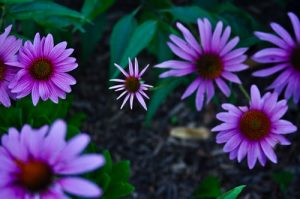
Wow! 12 issues, already!
We have decided to add this new bit to the format.
There’s a lot of information in both the Google Group and the Newsletter. Some of it may slip through the cracks. We want to make sure these highlights of the activities of the Collective have some space.
We have been reminded by Christine Heming that our network, the people in the Collective, is our greatest resource. Please keep posting news from both inside and outside of the Shambhala Mandala. Don’t assume people already have seen it. Not all get The Guardian, for instance… And then follow up on the issues and people you resonate with.
The seven Shambhala Land Centers, Casa Werma, Dechen Choling, Dorje Denma Ling, Dorje Khyung Dzong, Karmê Chöling, Shambhala Mountain Center, and Sky Lake have been meeting once a month for the last 6 months with the Steering Committee of the Collective to engage in conversations around how we can all work in a unified way to promote the care of the earth. Gampo Abbey will be joining this meeting in June. Check out the 15-minute video with bits from each center, shown on Earth Day, here, or on the website.
In a two-month process, the Steering Committee, and three advisors, Christine Heming, Donna Williams, and Emily Takahashi were led in sessions by GreenFaith head organizer Sara Shor, to develop our strategic plan for the year. The five areas we came to are:
1. Building membership, 2. fundraising, 3. working with the Land Centers and Shambhala Centers where there is current interest, 4. supporting and joining with GreenFaith as a method to involve ourselves outside of our Shambhala sphere, and 5. continuing the Education of Warriors through ongoing and new ways, including Shambhala Online, the Newsletter, Sunday Gatherings, Nyida Days, the Earth Salon with Deborah Luscomb & David Wimberly, the Movie group with Angela Pressburger, Planet A Book Group, The Climate Grief Group with Sara Demetry, and further course development.
And please let us know what you are up to… within Shambhala and in the world. What are you involved with? Please share! Thanks
Upcoming Events
Midsummer’s Day
Celebration of the Summer Solstice
Sunday Gatherings of June 20
3pm (ET) / 4pm (AT)
Touching the Earth is joyously hosting Midsummer’s Day Online,
with the Shambhala Board as co-host.
Join us on Zoom from your garden, or listen to the recording later!
Enjoy this time with family and friends!
Click here for more details!
EARTH SALON
Sunday, June 13, 2021
Noon (Atlantic time)
A monthly meeting offering, with occasional guest ‘experts,’
curated and co-facilitated by
David Wimberly and Deborah Luscomb.
Meeting the Earth at Karme Chöling ~ the Foragers
A presentation by Shastri Donna Williams,
Steve Sinnett, and Mike de Give
Our local group discusses strategies to make Karmê Chöling more sustainable.
We’ll look at regenerative agriculture, silviculture, bokashi, composting and plastics.
https://us02web.zoom.us/j/81262050347
Passcode: Sacred
Did you know you can become a sustaining member of the Collective
by contributing $9/month — $108/year?
Your monthly gift will help sustain the work of the Collective
and allow us to continue in the future!
You can read Irene’s letter for more details
You can also join the STEC mailing list for free and join the ongoing conversation!
Simply email us at:
[email protected]
Please visit our website
https://shambhalaonline.org/touching-the-earth-landing-page/
Any comments regarding this newsletter content or
suggested features and/or artists can be sent to:
[email protected]

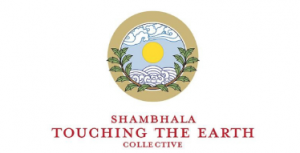

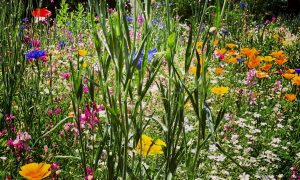
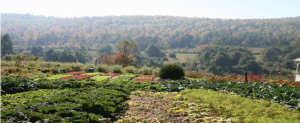




Jun 20, 2021
Reply
I really appreciate this edition of the newsletter and the links to articles and special offerings. Thank you all for caring for our precious earth!
Jun 16, 2021
Reply
Thank you, thank you and a deep bow to all.